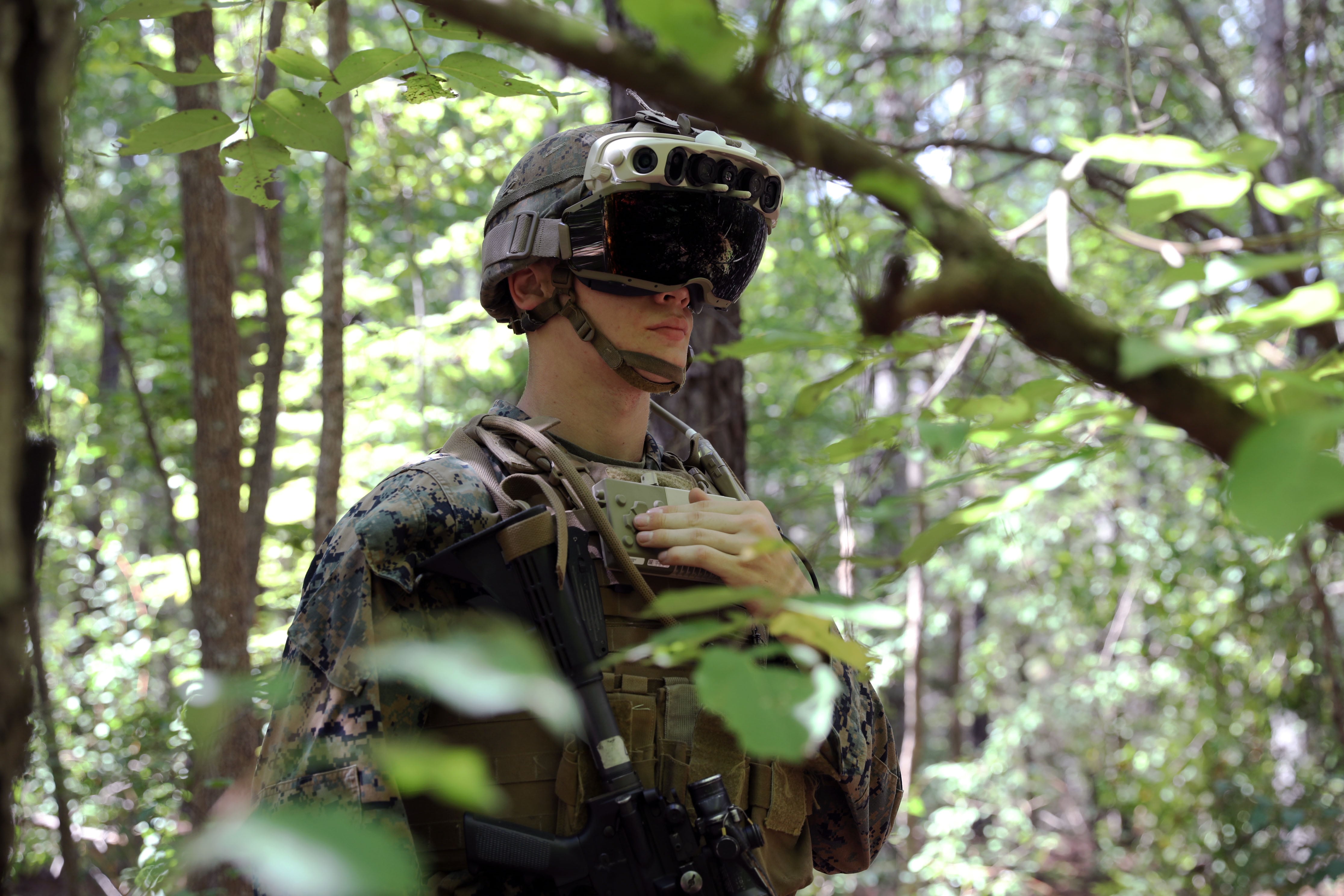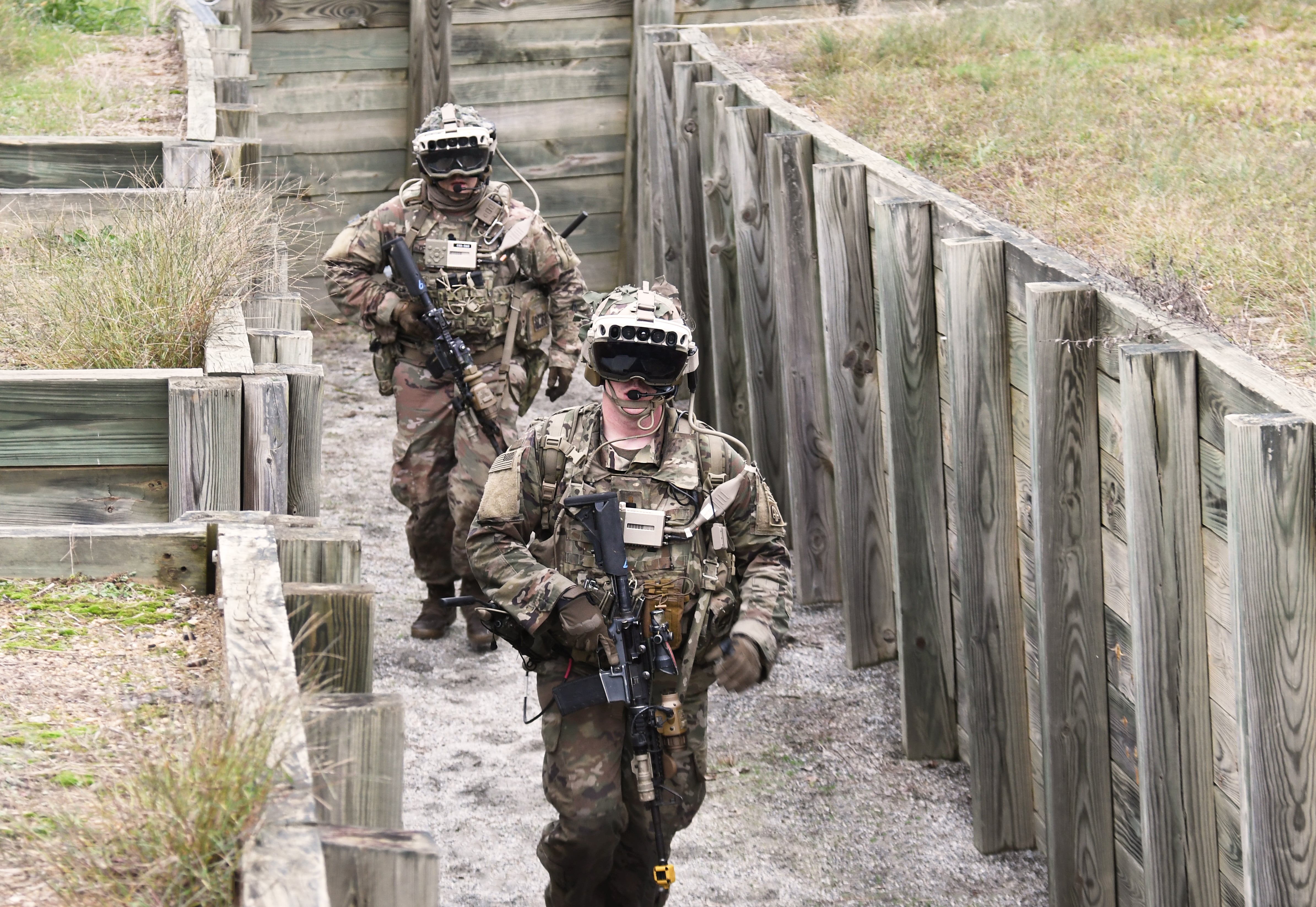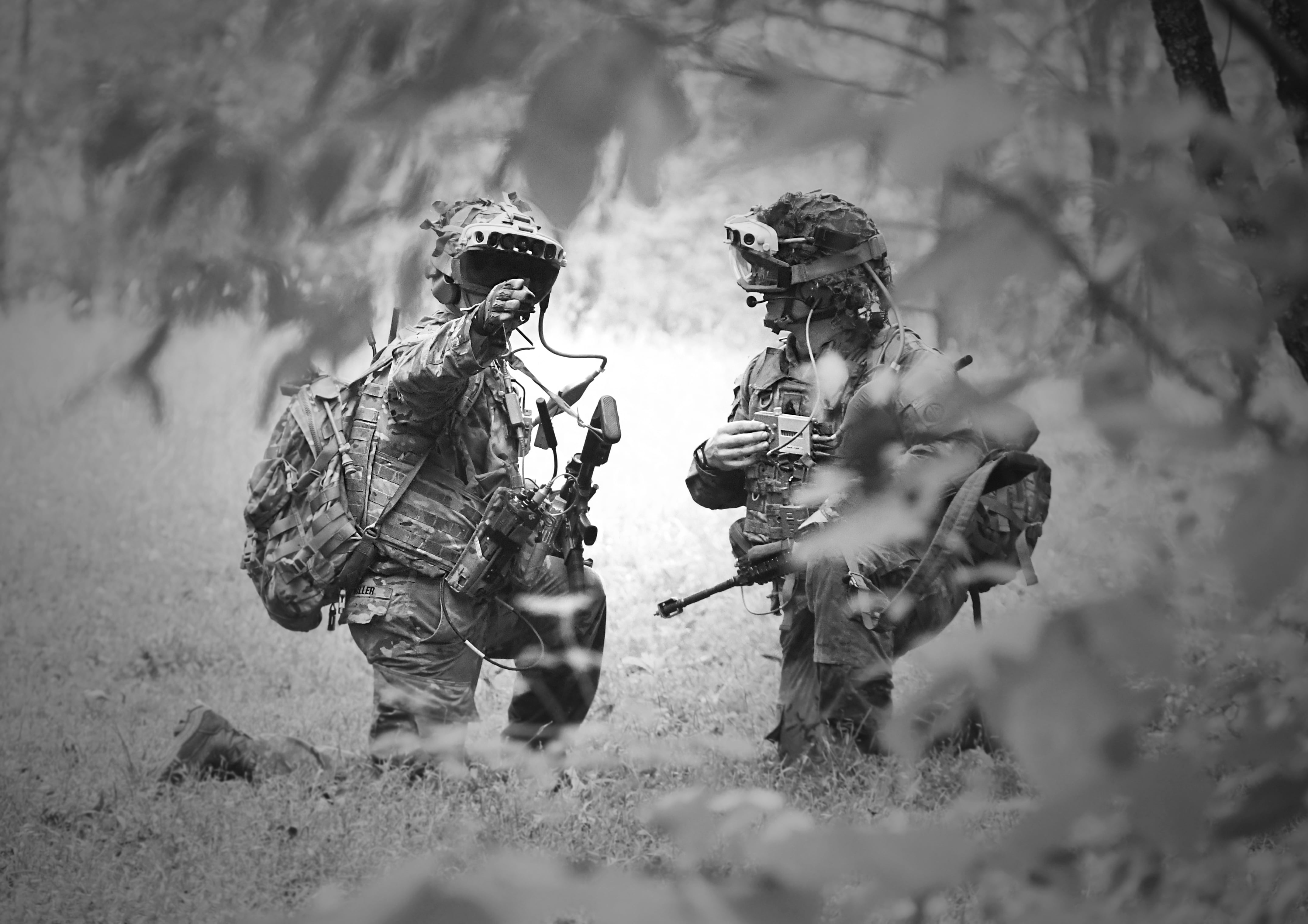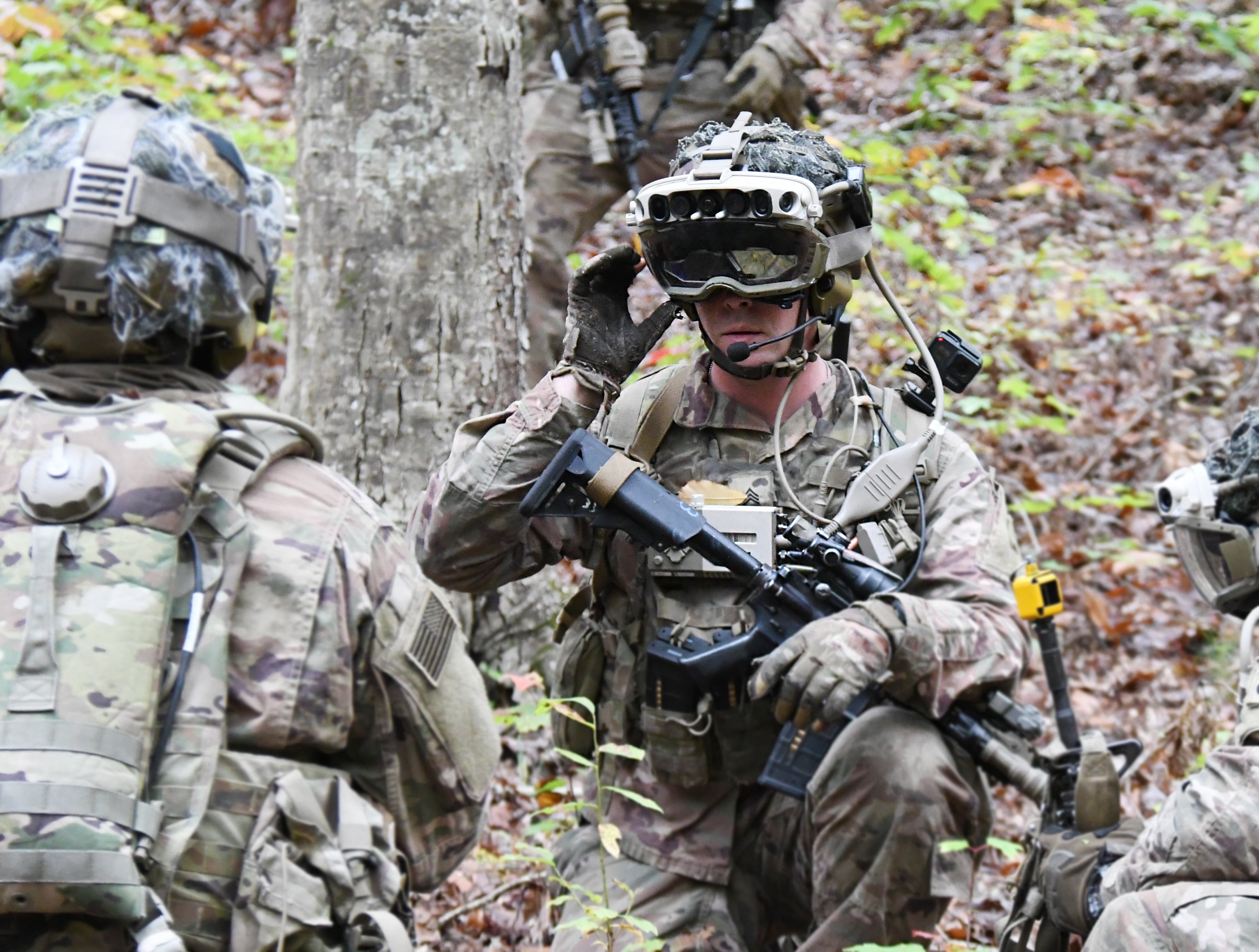The Army has finished the first field test of its do-it-all goggle in the ruggedized military version that soldiers could see by next year.
Soldiers and Marines ran the Integrated Visual Augmentation System through a company-sized, 72-hour training mission at Fort Pickett, Va., at the end of October, according to an Army statement.
The exercise included one of the more difficult dismounted operations — a nighttime trench clearing exercise.
But to make that challenging movement a bit more doable, soldiers weren’t limited to the IVAS goggle for targeting, night vision, thermal sights and navigation capabilities. They also had micro-drones that they could launch and view through the goggle, conducting their own shortrange reconnaissance of an obstacle before taking on the opposing force.
RELATED

This is the third “soldier touch point” in the slightly more than two-year project. To date, Army Special Forces, Rangers, soldiers with 25th Infantry Division, 10th Mountain Division and 82nd Airborne Division and Marines have tested the device.

In addition to the trench-clearing, soldiers from the 82nd Airborne Division used the goggle for navigation, mission planning and “rapid target acquisition.”
Marines participated, conducting range live fires, according to the statement.
The goggle uses a heads up display, built around the Microsoft HoloLens, and overlays augmented reality, showing a weapons sights view, compass headings, friendly and enemy positions, as well as delivering night vision and thermal sights in one package.
Over the past 18 months, developers have refined the design and software with Microsoft, using the company’s virtual reality goggle. They’ve run more than 25 tests with more than 1,000 participants. That started in squads and moved to platoon-sized work late last year, Army Times previously reported.
Additional capabilities are being tested now, including facial recognition software and text translation.
For mission planning and rehearsal, users can upload a 3D terrain map of the target to brief the squad or other element before stepping off, all downloaded after a quick recon from the unit or another asset’s drone scanning of the area.
Lt. Nicholas Christopher was one of the soldiers from the 501st Parachute Infantry Regiment who put the system to the test in the hinterlands of Fort Pickett’s operationally relevant environments.
“I can see where my entire platoon is projected on a map, and for me as a platoon leader, that’s amazing, because there’s a lot of guesswork that goes out the window,” he said. “There’s a lot of verbal communication over radios that I don’t have to do anymore. It’s very solid. I can see how this is going to make a great impact on the way we fight.”
The Army has plans to buy 40,000 pairs of the goggles initially, most to outfit special operations forces, infantry, scouts and combat engineers attached to infantry units, in active, Reserve and Guard components.
The goggle took on another role recently in the early months of the COVID-19 pandemic when the Army repurposed its software to use as a body temperature screening tool, keeping users six feet or more away from the test subject as they did their analysis.
But it’s key is to stay ahead of adversaries. Advanced night vision was once the main domain of the United States and some more modern militaries.

But cheaper night vision devices have proliferated among violent extremist organizations, and competitors such as Russia and China are also advancing their capabilities at the individual soldier level.
Brig. Gen. Davide Hodne, head of the Soldier Lethality Cross Functional Team, which is overseeing IVAS development along with Program Executive Office Soldier, referenced that reality in the Army statement.
“Overmatch has always been defined in terms of two things; our lethality and our protection must exceed the lethality and protection of our adversaries,” Hodne said. “In an environment where we share the night, the folks who can move faster, decide faster and think faster are the ones who have the advantage on today and tomorrow’s battlefield.”
The next step, if approved, should see 1,600 sets of the goggles built for the final phase of testing before the first unit is equipped, which is expected by late 2021, officials said.
Todd South has written about crime, courts, government and the military for multiple publications since 2004 and was named a 2014 Pulitzer finalist for a co-written project on witness intimidation. Todd is a Marine veteran of the Iraq War.





